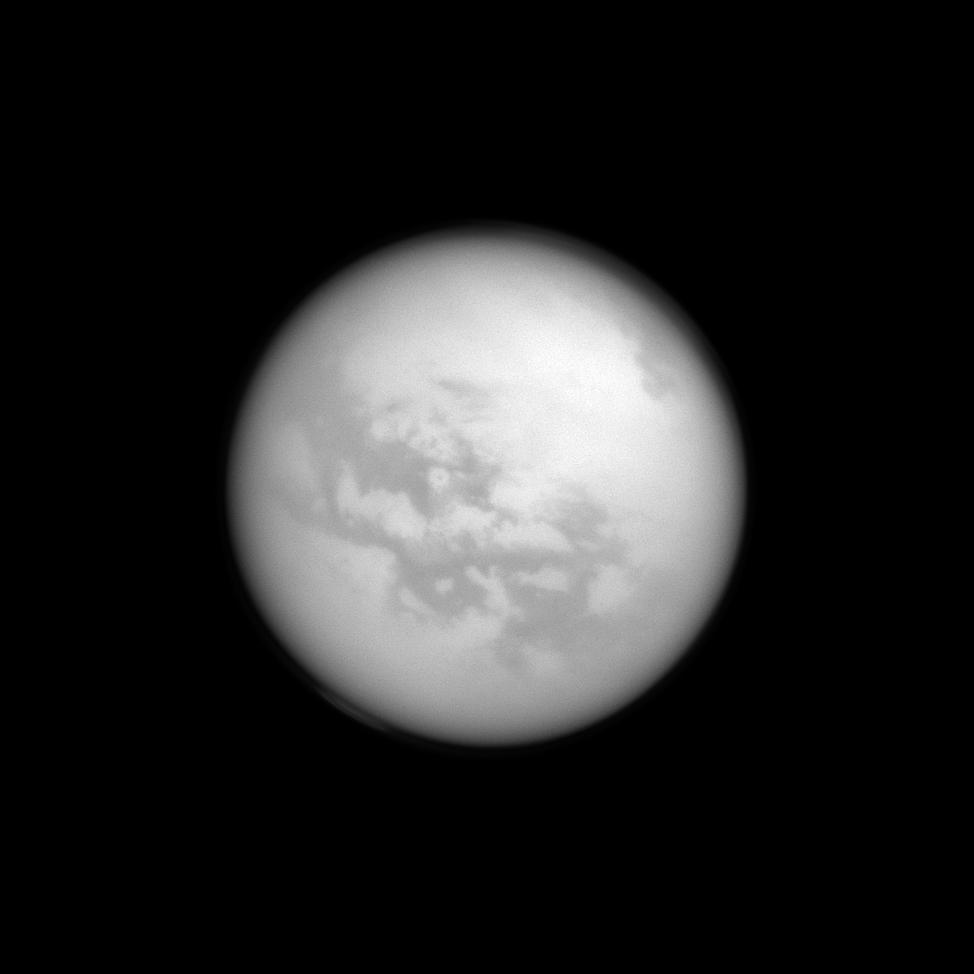Fenzal and Aztlan

| PIA Number | PIA14663 |
|---|---|
| Language |
|
Although hidden from human eyes, the Cassini spacecraft can spot these dark features on the surface of Titan thanks to its special near-infrared filters. The features seen here have been dubbed "Fensal" and "Aztlan" by scientists. The dark features are believed to be vast dunes of particles that precipitated out of Titan's atmosphere.
For a close-up of this region, see Naming New Lands. Titan, Saturn's largest moon, is 3,200 miles (5,150 kilometers) across.
This view looks toward the Saturn-facing hemisphere of Titan. North on Titan is up and rotated 32 degrees to the right.
The image was taken with the Cassini spacecraft narrow-angle camera on April 13, 2013 using a spectral filter sensitive to wavelengths of near-infrared light centered at 938 nanometers.
The view was acquired at a distance of approximately 1.117 million miles (1.797 million kilometers) from Titan and at a Sun-Titan-spacecraft, or phase, angle of 4 degrees. Image scale is 7 miles (11 kilometers) per pixel.
The Cassini-Huygens mission is a cooperative project of NASA, the European Space Agency and the Italian Space Agency. The Jet Propulsion Laboratory, a division of the California Institute of Technology in Pasadena, manages the mission for NASA's Science Mission Directorate in Washington. The Cassini orbiter and its two onboard cameras were designed, developed and assembled at JPL. The imaging team is based at the Space Science Institute, Boulder, Colo.
For more information about the Cassini-Huygens mission visit http://saturn.jpl.nasa.gov or http://www.nasa.gov/cassini . The Cassini imaging team homepage is at http://ciclops.org .
Credit: NASA/JPL-Caltech/Space Science Institute
